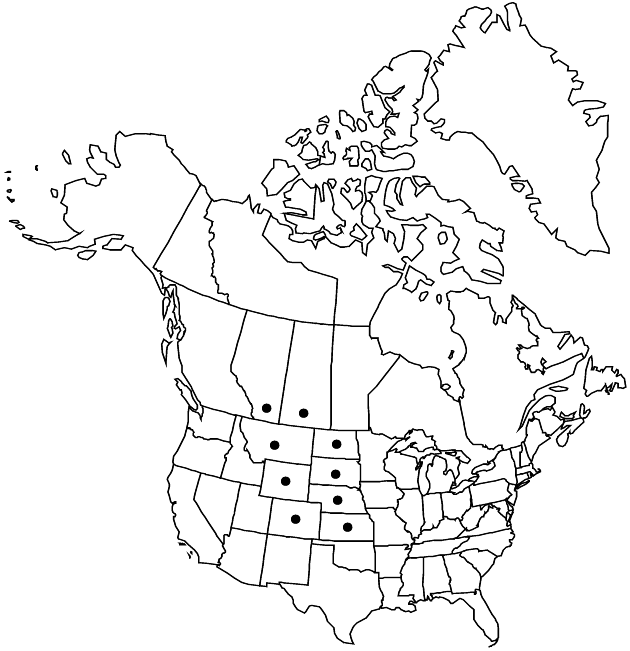Difference between revisions of "Hymenopappus filifolius var. polycephalus"
Rhodora 58: 235. 1956.
Endemic
Basionym: Hymenopappus polycephalus Osterhout Torreya 18: 90. 1918
imported>Volume Importer |
imported>Volume Importer |
||
| Line 55: | Line 55: | ||
|publication year=1956 | |publication year=1956 | ||
|special status=Endemic | |special status=Endemic | ||
| − | |source xml=https:// | + | |source xml=https://bitbucket.org/aafc-mbb/fna-data-curation/src/2e0870ddd59836b60bcf96646a41e87ea5a5943a/coarse_grained_fna_xml/V19-20-21/V21_765.xml |
|tribe=Asteraceae tribe Heliantheae | |tribe=Asteraceae tribe Heliantheae | ||
|subtribe=Asteraceae (tribe Heliantheae) subtribe Hymenopappinae | |subtribe=Asteraceae (tribe Heliantheae) subtribe Hymenopappinae | ||
Latest revision as of 20:14, 5 November 2020
Stems (20–)30–60 cm. Leaves: basal axils ± densely tomentose, terminal lobes (4–)10–30 mm; cauline (2–)3–8. Heads 5–60. Peduncles 2–8 cm. Phyllaries 5–8 mm. Florets 20–50; corollas yellowish, 3–3.5 mm, throats 1.3–1.8 mm, lengths 2–3 times lobes; anthers 2.5–3 mm. Cypselae 4–5 mm, hairs 1–2 mm; pappi 0.6–2 mm. 2n = 68.
Phenology: Flowering Jun–Aug.
Habitat: Hills, prairies, sands, clays
Elevation: 600–2100+ m
Distribution

Alta., Sask., Colo., Kans., Mont., Nebr., N.Dak., S.Dak., Wyo.
Discussion
Selected References
None.
Lower Taxa
None.